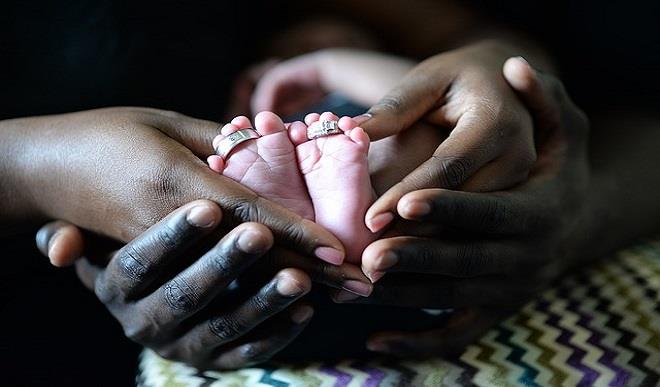
In studying the science of adversity, many researchers trace their insights to the work on attachment theory started by a British psychoanalyst, John Bowlby, and a Canadian researcher from the University of Toronto, MaryAinsworth. Attachment theorists studied the behaviour of toddlers and their attachment to their parents; which moves our discussion from rats to humans.
So, what is the equivalent of licking in rats, among humans?
These researchers found that babies who received immediate attention from their parents when they cry, etc. became more independent than those who did not. “The dominant advice to parents in the 1950s, based on behavioural theory, was to avoid “spoiling” infants by picking them up or otherwise comforting them when they cried,” Paul Tough writes in his book, ‘How Children Succeed.’
“[However]in a series of studies in the 1960s and early 1970s, Ainsworth showed that the effect of early nurturancewas exactly the opposite of what the behaviorists expected. Babies whose parents responded readily andfully to their cries in the first months of life were, at one year, more independent and intrepid than babieswhose parents had ignored their cries. In preschool, the pattern continued-the children whose parentshad responded most sensitively to their emotional needs as infants were the most self-reliant. Warm,sensitive parental care, Ainsworth and Bowlby contended, created a “secure base” from which a child could explore the world,” Tough comments.
To test the theory and measure or observe the babies’ emotions more objectively, Ainsworth invented what is called the Strange Situation, when she was at Johns HopkinsUniversity.
Twelve months old toddlers were put in a playroom with their mothers and the mothers left them alone in the room after playing with them for some time. Sometimes the children are left with a stranger, sometimes they were left alone. When the mothers came back 15 minutes later, the researchers observed how the babies would behave during the reunion.
Some babies ran towards their mothers, happy to see them, some cried while running toward them. These children were tagged as securely attached. Securely attached children make up 60 percent of children – using American population.
However, some babies simply ignored their mothers, some fell on the floor or lashed at them when they returned. These toddlers were labelled as anxiously attached.
The researchers found that a child’s reaction in the Strange Situation study was related to the parents responsiveness in the child’s first year of life. Parents who completely responded to the child’s every need, created securely attached children. Those who were hostile or conflicted, created anxiously attached children. And early attachment, Ainsworth theorized, created psychological effects that could last a lifetime.
Ainsworth research assistant, Everett Waters, later teamed up with Alan Sroufe at the University of Minnesota to push back the frontiers of knowledge on child development. At this time, Ainsworth’s idea that parental attachment had a lifetime effect on individuals was only a theory. Later, Sroufe partnered with Byron Egeland, a psychologist at the same university, who received a government research grant to do a longitudinal study (a research that runs over extended period) on low-income mothers and their children.
The recruited close to 300 pregnant women who were about to become mothers for the first time. The researchers started tracking the children at birth and they’ve been tracking them ever since. Those children are in their early forties now. In 2005, Egeland and Sroufe wrote a book that documents their results titled The Development of the Person, which is their most comprehensive evaluation of early parenting relationships on child developement.
However, here’s the summary of their findings.
Attachment classification, as measured by the Strange Situation and other tests, was predictive of many outcomes later in life. Most of this predictive power holds, even when the child is one year old!
The children with secure attachment history were more socially competent, related well with their preschool peers, better able to cope with adolescence, better able to form close relationships in junior secondary school and over 60 percent of them were rated ‘effective’ by their teachers when they were in preschool, because they engaged, were attentive and didn’t act out in class. Interestingly, among those who had anxious attachment history, only about 13 percent of them were rated ‘effective.’ Their teachers, who didn’t know about their attachment classification history, described majority of them as having behaviour problems.
Children of parents who were earlier observed to be emotionally unavailable or disengaged, did worse in preschool; and their teachers recommended special education programmes for them.
Ninety percent of anxiously attached children were put in the ‘dependent’ category compared to 12 percent of securely attached children. When teachers and other children were asked about the children with the history of anxious attachment, they were tagged as mean, immature and antisocial.
At the age of ten, the researchers randomly selected the children in the study to participate in a four-week camping programme.
The camp counsellors, who didn’t know about their attachment classification history, described the children who were securely attached in infancy as confident, curious and better able to deal with setbacks. Anxiously attached children on the other hand, spent less time with their peers and more time alone and with the counsellors.
Also, early parenting was able to predict, better than IQ, which children will graduate from secondary school. This means that you can look at four-year old child and predict, with 77 percent accuracy, whether he is going to complete secondary school or not – that is, if you knew his history of early parental care.
However, the studies also uncovered two important insights. One, attachment classification is not set in stone and attachment relationship may change during childhood. Two, some children with anxious attachment went on to prosper.
….To be continued.

 Join Daily Trust WhatsApp Community For Quick Access To News and Happenings Around You.
Join Daily Trust WhatsApp Community For Quick Access To News and Happenings Around You.



